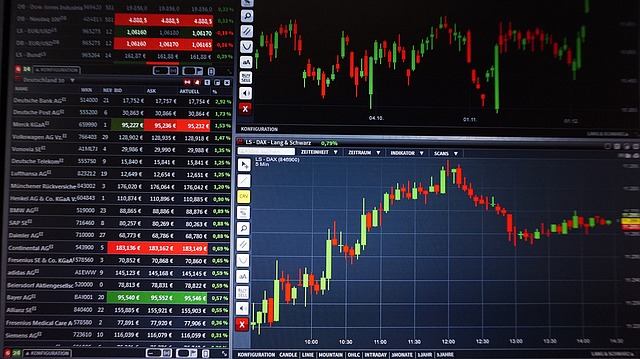Exploring the Influence of Exchange Rates on International Stocks
Uncover how exchange rate fluctuations impact global stock markets and learn why understanding this relationship is crucial for investors navigating the world of international finance.
In the interconnected world of finance, investors are increasingly looking beyond their domestic markets to find growth and diversification opportunities. International stocks open up a world of potential for portfolio expansion, but they also introduce a unique set of risks—particularly those stemming from exchange rates. Currency fluctuations can dramatically affect the returns on foreign investments, making it essential for investors to understand how exchange rates influence international stocks and what strategies might help mitigate the associated risks.

Understanding Exchange Rates and Their Role in Global Finance
Exchange rates represent the value of one country’s currency in relation to another. When you invest in a stock from another country, you are essentially making two investments: one in the foreign stock itself and another in the currency of that country. Therefore, exchange rates play a crucial role in determining the actual return on foreign investments. For example, if you’re a U.S.-based investor buying shares of a European company, the performance of the euro relative to the dollar will impact your returns. If the euro strengthens against the dollar, your returns are likely to increase, but if the euro weakens, your gains could be reduced, or even erased.
Exchange Rate Movements: A Double-Edged Sword
The influence of exchange rate movements on international stocks is a double-edged sword. On the one hand, favorable currency shifts can amplify gains. For instance, if you invest in Japanese stocks while the yen is weak against the dollar, you might benefit from a rebound in the yen that boosts the dollar value of your returns. On the other hand, if the yen weakens further, the negative exchange rate effect could shrink or eliminate the profits from the stock’s performance.
Currency fluctuations are influenced by numerous factors, including interest rates, inflation rates, economic policies, geopolitical stability, and market sentiment. Central banks, particularly those in major economies like the United States, European Union, and Japan, have a strong influence on exchange rates. Interest rate hikes by these banks often strengthen their currency as they attract foreign investments looking for higher returns, whereas rate cuts can have the opposite effect. For investors, understanding these dynamics is crucial when analyzing potential returns on international investments.
Impact of Exchange Rates on Returns: A Practical Example
Let’s look at a practical example to illustrate the effect of exchange rates on international investments. Suppose an American investor decides to invest in a European company. At the time of investment, the euro is trading at $1.10 against the dollar. If the euro appreciates to $1.20, the investor sees a 9% currency gain in addition to any gains on the stock itself. Conversely, if the euro depreciates to $1.00, the investor experiences a 9% currency loss, potentially offsetting or even outweighing the stock’s performance.

This example highlights why currency risk is often one of the primary considerations for international investors. While currency movements can lead to significant gains, they also introduce an additional layer of volatility. Managing this risk is not only about understanding the exchange rates but also considering economic indicators and the monetary policies of different countries.
Strategies for Managing Exchange Rate Risk
Investors employ several strategies to manage the risks associated with exchange rate fluctuations. One common approach is currency hedging, which involves using financial instruments like options or futures to offset potential currency losses. For instance, if an investor expects the Japanese yen to weaken but wants to invest in Japanese stocks, they might purchase a forward contract that locks in a specific exchange rate, effectively insulating their investment from unfavorable currency shifts.
Another strategy is geographic diversification. By spreading investments across various countries and currencies, investors can reduce the impact of exchange rate fluctuations on their portfolios. While some currencies may depreciate, others may appreciate, balancing out the overall currency risk.
The Role of Diversification and Long-Term Perspective in Managing Currency Risk
A diversified portfolio can significantly reduce the impact of exchange rate volatility on investment returns. By investing across multiple regions and sectors, investors spread their exposure to currency fluctuations, lowering the likelihood that any one currency will have a disproportionate effect on the entire portfolio. This is especially relevant for investors who prefer not to rely on hedging, which can sometimes be costly or complex to manage. Diversification, while not eliminating risk, can help smooth out the potential swings caused by currency movements over time.
Moreover, a long-term investment horizon can be advantageous when dealing with currency fluctuations. Currencies often experience cyclical patterns, with periods of appreciation followed by depreciation. For long-term investors, these cycles may cancel each other out, making the impact of exchange rate fluctuations less severe in the context of a multi-year holding period. However, it’s essential to remember that some currencies are more volatile than others. Emerging market currencies, for example, tend to have more pronounced swings due to political and economic instability. Investors should therefore evaluate the stability and predictability of the currency associated with their investments.
The Growing Influence of Forex Markets on Global Stocks

Foreign exchange (forex) markets are the world’s largest and most liquid financial markets, with a daily trading volume exceeding $6 trillion. Due to this high liquidity and round-the-clock trading, forex markets can experience rapid price changes that ripple through to stock markets worldwide. For international investors, understanding the influence of forex markets is essential, as currency values are constantly in flux, often responding to minute-by-minute shifts in economic data, global events, and sentiment. These market dynamics make exchange rates highly sensitive and add complexity to the process of investing in international stocks.
The interdependence between stock markets and forex markets also creates feedback loops. For instance, if a currency suddenly depreciates, it might reduce the value of foreign-held stocks, prompting investors to pull back and further affect stock prices. Conversely, an appreciating currency can attract foreign investors looking for capital gains, boosting both stock prices and demand for the currency.
Emerging Trends in Currency and International Stock Investment
One notable trend in international investing is the increased use of exchange-traded funds (ETFs) that focus on currency-hedged international stocks. These ETFs allow investors to gain exposure to foreign markets while neutralizing the impact of currency fluctuations. For example, an investor who wants exposure to Japanese stocks but is wary of yen volatility could invest in a yen-hedged ETF that aims to eliminate currency risk. Such financial products provide a simplified approach to international investing, enabling investors to focus on stock performance without worrying about currency movements.
Additionally, more investors are recognizing the value of allocating a portion of their portfolios to currencies that act as safe havens during market uncertainty, such as the U.S. dollar, Swiss franc, and Japanese yen. These safe-haven currencies can provide stability, particularly during global economic downturns when riskier currencies may face sharp declines. By including assets denominated in stable currencies, investors can potentially reduce the volatility of their overall portfolios and protect against downturns in the value of riskier currencies.
Final Thoughts on Navigating Exchange Rate Effects
Navigating the influence of exchange rates on international stocks is a complex but crucial aspect of global investing. For those willing to embrace the challenge, understanding how currency fluctuations impact investment returns opens up new opportunities for diversification and growth. While currency risk cannot be entirely avoided, investors can manage it through hedging, geographic diversification, and a long-term perspective.
In today’s globalized economy, currencies and stocks are intertwined in ways that can shape financial outcomes. By staying informed about exchange rate movements, keeping an eye on forex markets, and applying effective risk management strategies, investors can make more confident decisions in international markets. The world of global finance is both expansive and dynamic, and for those who master the nuances of currency influence, it offers pathways to rewards that go beyond borders.

